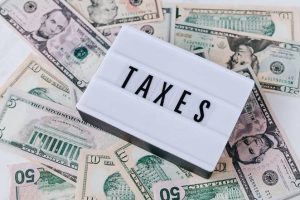
You might have heard a little about it or it might have passed you by completely, but the IRS’ Fresh Start Program for taxes can make a huge difference for those who qualify.
The program was created by the Federal Government and is offered by the IRS to help those who are struggling with outstanding tax debt that they cannot pay.
Read ahead to find out how it works and who can take advantage of it.
What Is The IRS Fresh Start Program?
The program (also referred to as the Fresh Start Tax Relief Program or the IRS Fresh Start Initiative) is an initiative that was designed to reduce the harmful impact of predatory collection practices that cause substantial financial problems for taxpayers.
Through it, you may be able to reduce the total amount of tax debt that you owe, relieve financial obligations to the IRS, reduce penalties and interest, and avoid other issues like Federal Tax Lien and Wage Garnishment.
It was first released in 2011 but has since been expanded to offer more relief and assistance to a wider group of taxpayers, depending on your circumstances.
How Does It Work?
If you owe a significant amount of back taxes and do not have the means to pay them, the program prevents the IRS from collecting more than you can afford. To deliver on this, they offer four main options that you can utilize:
- Installment Agreement. This is a payment plan that can be set up which enables you to tackle your debt in a more manageable way through monthly payments. This will stop you from receiving collection letters or penalties, as long as you are making the payments.
- Offer in Compromise. This is an agreement that means you are able to settle your debt for a lower amount than what you owe. It is probably the most beneficial form of tax relief that the program offers, but it can be hard to qualify.
- Currently Non-Collectible Status. If you cannot pay your taxes, then the IRS can apply for this status. It is an option that doesn’t actually remove any of your debt, but it does stop collection activity from continuing. That can include wage garnishments, bank levies, and liens.
- Penalty Abatement. If you can prove a reasonable cause, then you may be awarded a penalty abatement, which essentially reduces or removes a penalty that you owe. Local IRS offices can grant an abatement of up to $100.
Who Is Eligible For The IRS Fresh Start Program?
There are a number of different factors that affect whether or not you will qualify for the Program. Essentially, it is offered to those who can prove that paying their tax debt as it stands, in the way that it is currently being collected, will cause significant financial hardship.
This will depend on factors such as your:
- Ability to pay
- Income
- Expenses
- Asset equity
To apply for the program, your tax returns need to be filed and all of your estimated payments and withholdings need to be current and correct.
How Do You Apply For The IRS Fresh Start Program?
Actually applying for the Fresh Start Program with the IRS can be a little daunting, as you will need to present sufficient evidence proving that you qualify for any of the relief options that they offer.
When you do apply, you will mail in a request alongside your documentation. This might include medical statements, insurance claims, or other official reports that demonstrate the financial situation that you are in.
Summary: What is the IRS’ Fresh Start Program and Who Qualifies For It?
The IRS’ Fresh Start Program is an initiative that offers debt relief options for taxpayers that currently owe more than they can pay without experiencing significant financial hardship. There are multiple ways that the program can help, but you do need to qualify by proving that you are unable to make payments as they currently stand.




Leave a Reply